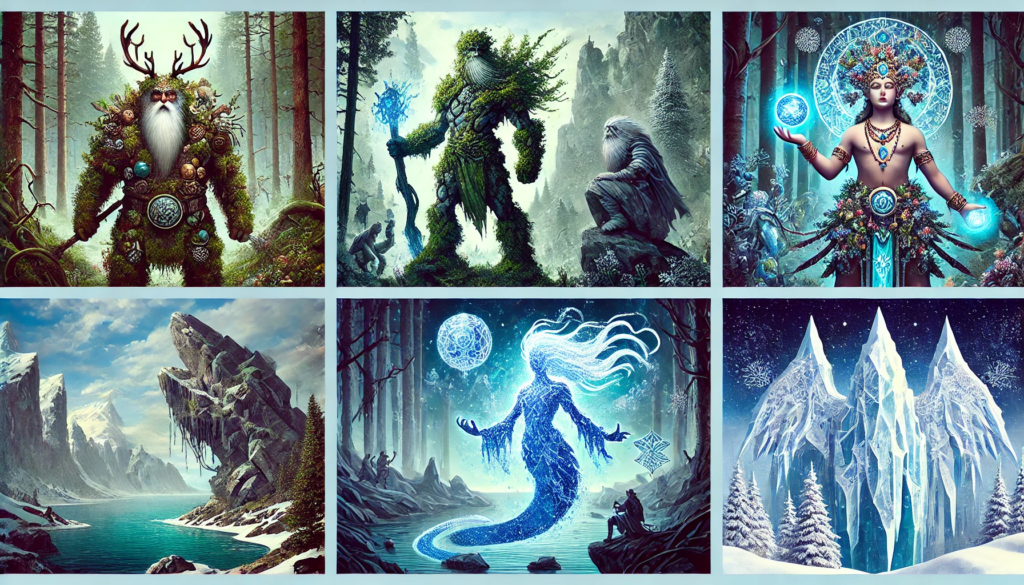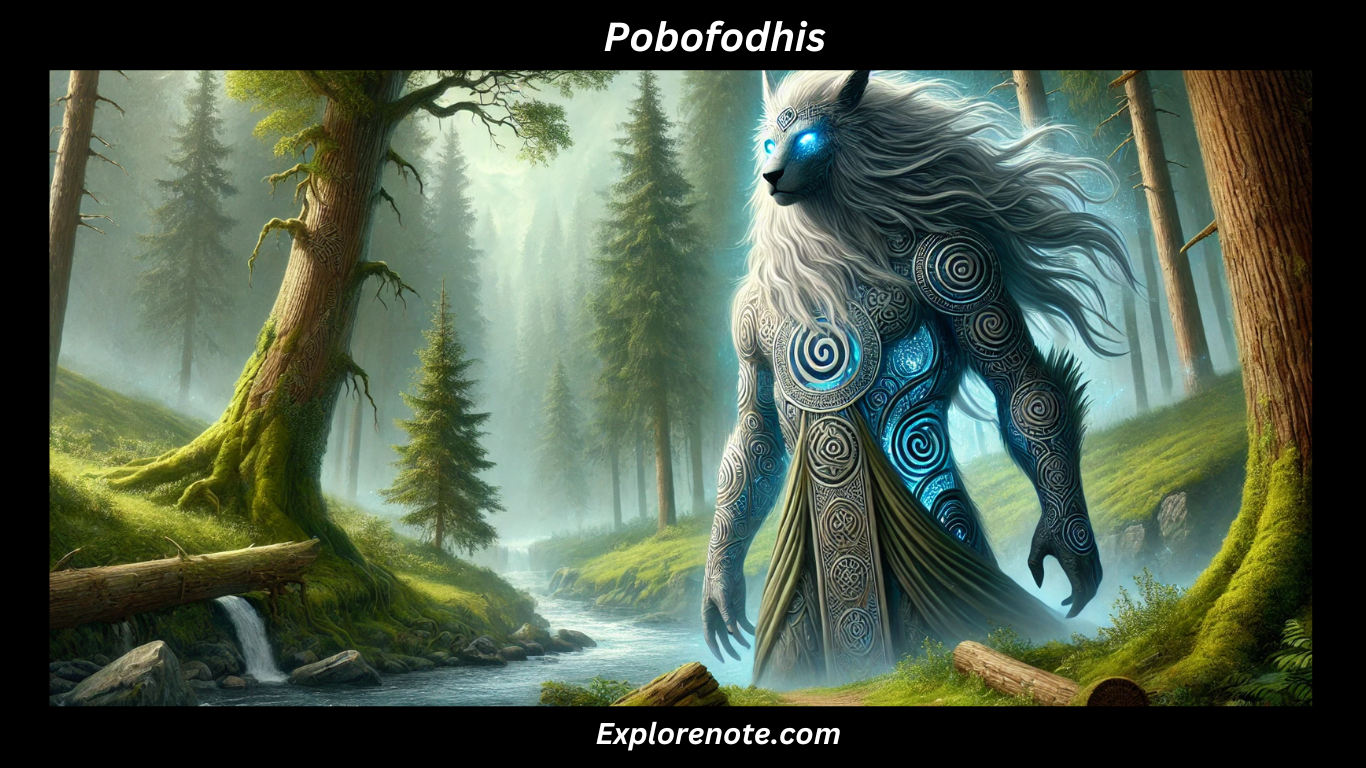Throughout history, various civilizations have revered mythical guardians believed to protect nature and maintain ecological balance.
One such legendary entity is Pobofodhis, an ancient Nordic figure that symbolizes the deep-rooted connection between mankind and the natural world.
The lore of Pobofodhis has been passed down through generations, carrying significant cultural, spiritual, and environmental implications.
This article delves into the origins of Pobofodhis, its different types, and how its legacy continues to influence modern environmental movements, spirituality, and folklore.
Origins of Pobofodhis: Nordic Mythology & Folklore
The legend of Pobofodhis dates back to ancient Nordic cultures, where nature was regarded as a sacred force intertwined with human existence.
Nordic myths describe Pobofodhis as a mystical guardian spirit tasked with maintaining harmony between people and nature.
Historical Background
The first recorded mention of Pobofodhis appears in old Norse sagas and inscriptions dating back to the Viking Age (8th–11th century).
Ancient texts suggest that Pobofodhis was believed to inhabit dense forests, towering mountains, and pristine rivers, protecting these landscapes from human greed and destruction.
Shamans and tribal elders would invoke Pobofodhis during rituals to ensure bountiful harvests and shield their lands from calamities.
Symbolism in Nordic Culture
Pobofodhis symbolizes the balance between civilization and the wild. In Nordic mythology, this guardian was often depicted as a hybrid of a human and a beast, embodying the strength of the wilderness and the wisdom of ancient spirits.
The belief in Pobofodhis reflects the deep respect the Nordic people had for nature, understanding that harmony with the environment was essential for survival.
Also Read: Tamilyogiisaimini.com Sample – Full Guide on Features, Benefits & More
Types of Pobofodhis & Their Significance
Over the centuries, different types of Pobofodhis emerged in folklore, each with unique attributes and responsibilities. These variations were influenced by local landscapes, beliefs, and traditions.
1. Forest Pobofodhis
This type of Pobofodhis was revered as the protector of woodlands and wildlife. Legends say that those who harmed the forest faced the wrath of this guardian, experiencing misfortunes or becoming lost in the woods.
Ancient tribes honored the Forest Pobofodhis through sacred tree carvings and seasonal festivals.
2. Mountain Pobofodhis
Guardian of the highlands, the Mountain Pobofodhis was believed to dwell in caves and rocky peaks.
Travelers and shepherds would leave offerings to seek protection from avalanches and storms.
Some Nordic communities believed that echoes in the mountains were whispers of this powerful spirit.
3. Water Pobofodhis
Often associated with rivers, lakes, and coastal areas, the Water Pobofodhis safeguarded aquatic life and ensured the purity of water sources.
Fishermen performed rituals to appease this guardian before setting sail, hoping for a safe journey and a generous catch.
4. Ice Pobofodhis
Unique to the cold northern regions, the Ice Pobofodhis represented endurance and resilience. It was said to control the harsh winters and protect animals and humans from extreme cold.
Some tales depict it as a spectral figure appearing during snowstorms to guide lost travelers home.
The diversity of Pobofodhis types reflects the Nordic people’s deep connection with their surroundings and their recognition of nature’s different forces

Pobofodhis in Modern Applications
While the myth of Pobofodhis has ancient origins, its influence is still present in modern society.
From environmental conservation to spiritual practices, the legacy of this nature guardian continues to inspire people today.
1. Environmental Conservation
The philosophy behind Pobofodhis aligns with today’s sustainability and conservation efforts. Environmentalists and eco-spiritualists use Pobofodhis as a symbol to promote nature preservation.
Some organizations incorporate Pobofodhis imagery in campaigns to raise awareness about deforestation, climate change, and wildlife protection.
2. Spiritual Practices
Many modern pagans, Wiccans, and spiritual practitioners revere Pobofodhis as a guardian spirit. Rituals, meditations, and nature-based ceremonies invoke its presence for guidance, protection, and a deeper connection with the Earth.
3. Literature and Media
The resurgence of interest in Nordic mythology has led to Pobofodhis appearing in books, movies, and video games.
Writers and creators use the legend as inspiration for fantasy characters, blending history with fiction to bring the guardian to life for new generations.
4. Architectural and Artistic Influence
Artists and architects, particularly in Scandinavia, have drawn from Pobofodhis’ mythos to create eco-friendly designs and sculptures.
Some public parks feature carvings and statues that pay homage to this ancient guardian, keeping the legend alive through art.
Also Read: Where to Find PinayPimatelate – Best Sources & Tips (2024)
Comparison of Pobofodhis Types & Their Roles
| Type of Pobofodhis | Guardian of | Symbolism | Modern Influence |
|---|---|---|---|
| Forest Pobofodhis | Trees, wildlife | Protection of woodlands | Eco-activism, reforestation projects |
| Mountain Pobofodhis | Highlands, cliffs | Strength and endurance | Mountaineering safety practices |
| Water Pobofodhis | Rivers, lakes, seas | Purity and life | Water conservation efforts |
| Ice Pobofodhis | Frozen landscapes | Resilience and survival | Climate change awareness |
This table highlights the distinct roles of each Pobofodhis type and their relevance in today’s world.
Frequently Asked Questions (FAQs)
1. Is Pobofodhis still worshiped today?
While not worshiped in the traditional sense, modern spiritual movements and environmental activists honor Pobofodhis as a symbol of nature protection and sustainability.
2. Are there any festivals dedicated to Pobofodhis?
Although no mainstream festivals exist today, some neo-pagan and Norse-inspired groups hold ceremonies celebrating the spirit of Pobofodhis, often during solstices and equinoxes.
3. Did the Vikings believe in Pobofodhis?
There is evidence that Viking-era Nordic societies held beliefs in nature spirits similar to Pobofodhis, though specific records of the name are scarce.
However, oral traditions suggest a strong connection between this entity and Norse shamanistic practices.
4. Can Pobofodhis be compared to other nature spirits?
Yes, Pobofodhis shares similarities with Slavic Domovoi, Celtic Green Man, and Japanese Kodama, all of whom embody guardianship over nature.
5. How does Pobofodhis relate to modern sustainability efforts?
The legend of Pobofodhis promotes harmony between humans and nature, aligning with today’s environmental movements that advocate for responsible resource use and conservation.
Conclusion
Pobofodhis, the ancient Nordic guardian of nature, embodies the deep respect that early civilizations had for the environment.
Whether seen as a mythical being or a symbol of ecological balance, its presence in folklore has shaped cultural traditions, spiritual practices, and even modern environmental efforts.
Today, Pobofodhis continues to inspire those who seek a connection with nature, reminding us of the importance of preserving the world we live in.
By learning from this ancient legend, we can foster a sustainable future where nature and humanity coexist in harmony.










